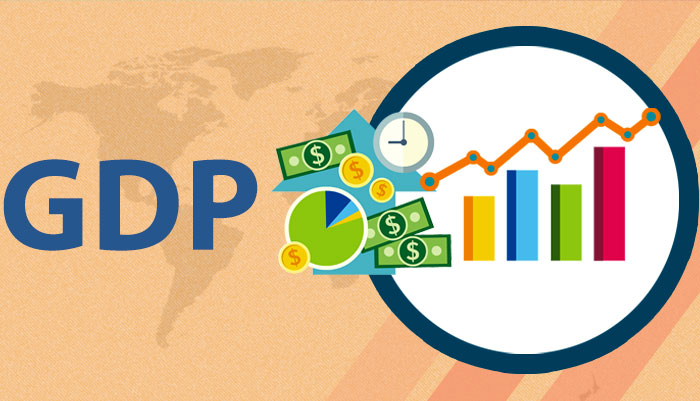
GDP is the total value of all goods and services produced in the economy in a given period of time.
You may read: GDP Demystified for a better understanding of GDP.
If we use the current prices of goods and services to calculate GDP, we get Nominal GDP. India’s GDP in the year 2016-17 was estimated to be Rs.1,52,51,028 crores at current prices.
But, to get real GDP we use the prices in the base year. The base year for India is 2011-12. India’s GDP in the year 2016-17 was estimated to be Rs.12,165,481 crores at 2011-12 prices. Real GDP is also known as GDP at constant prices.
It is calculated to eliminate the effect of price rise in GDP.
In short, Real GDP is nominal GDP adjusted for inflation.
(Read: Changes in Methodology of Calculating GDP)
Difference between Nominal and PPP GDP
The GDP figure is calculated and reported in a country’s own currency. India’s Nominal GDP is reported in rupees.
Therefore, to compare the GDP of different countries, their GDP is converted into a common currency. The common currency is usually US dollars. This conversion can be done through two methods:
- Market exchange rate: The conversion is done using the market exchange rate. Let’s say the market exchange rate is 1$ = Rs.64.76. The Nominal GDP will be converted accordingly. The resultant figure is Nominal GDP expressed in dollars.
- Purchasing Power Parity (PPP): The conversion is done using the PPP exchange rate.
Nominal GDP does not take into account differences in the cost of living in different countries. Let’s say you can buy a cup of coffee in the US for 1$. But, in India, you can buy a cup of coffee as well as a grilled sandwich for 1$ or Rs.64.76. This is because the purchasing power is more in India as the cost of living is low.
Thus, you can have a higher standard of living in India with the same income you earn in the US.
To account for the differences in the cost of living between countries, we use the PPP exchange rate for conversion. The PPP exchange rate is the ratio of the currencies’ purchasing power. Example: You can buy a cup of coffee for 1$ in the US. In India, you can buy it for Rs.20. Hence, as per PPP, 1$ = Rs.20 and not Rs.64.76.
In our example, we have used coffee to compare purchasing power. In reality, the price of a basket of goods and services is used to determine purchasing power.
India is the world’s sixth-largest economy by nominal GDP and the third-largest by PPP GDP.
However, India ranks 141st in Nominal GDP per capita and 123rd in GDP per capita at PPP.
GDP per capita is calculated by dividing the GDP by the total population of a country. It measures the average income of a country. It is used as an indicator of living standards.
PPP theory and the Big Mac Index
There is a theory which states that: In the long run, the market exchange rates will gradually converge to the PPP exchange rate. This is called the theory of purchasing power parity (PPP).
The Economist invented a Big Mac Index as a light-hearted guide to check whether currencies are at their correct level as per the PPP theory. It compared the price of the Big Mac burgers across countries. (In the same way, we had done for coffee). For example, the price of a Big Mac in India is Rs.178. In America, it is $5.30. Hence, as per PPP exchange rate, 1$ = Rs.33.58. We got this by dividing 178 (price in India) by 5.30 (price in the US). But, as per the market exchange rate, 1$ = Rs.64.56.
As per the theory of PPP, the rupee is undervalued by 48 % against the dollar. We need Rs.64.56 to buy a dollar in the foreign currency market. As per PPP, we should need only Rs.33.58.
Economyria is now on Telegram. For a simplified analysis of topics related to economy/ business/ finance, subscribe to Economyria on Telegram
Other posts from Economyria that you may like-
- Fiscal Deficit Demystified
- Inflation Demystified
- Balance of Payments, current account, capital account demystified
- The trade war between the US and China
- What is the World Trade Organisation?
The topic for this post was suggested to me on my Contact/ Suggest a topic page
References:
Very nicely explained
Thank you 🙂
Beneficial
Thanks!
Excellent
Thank you, Sanjib!
A very good explanation
Thanks!
The way of your explanation is best .Thank you.
Which authority decides the PPP exchange rate?
It is done by International Comparison Program (ICP).
It is managed by the World Bank under the auspices of the United Nations Statistical Commission, and relies on a partnership of international, regional, sub-regional, and national agencies.
It is one of the largest statistical initiatives in the world.